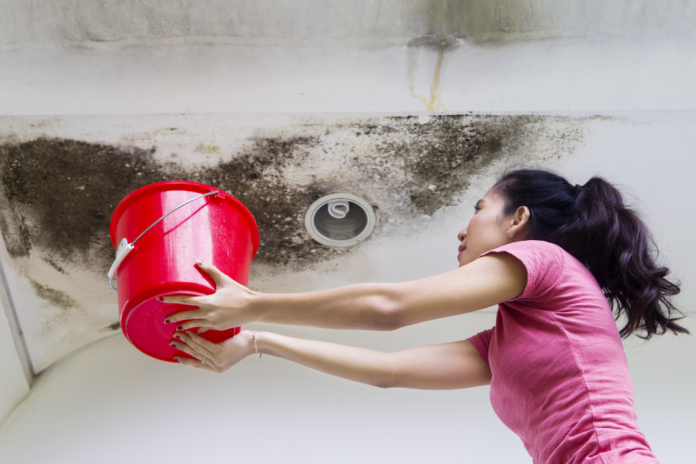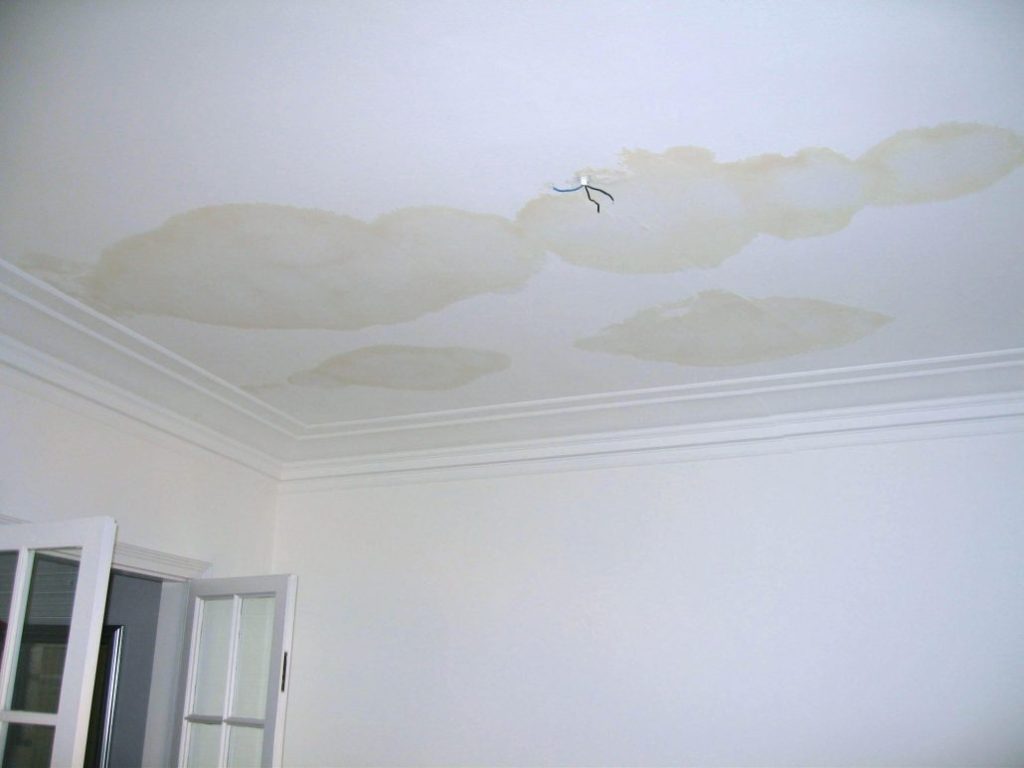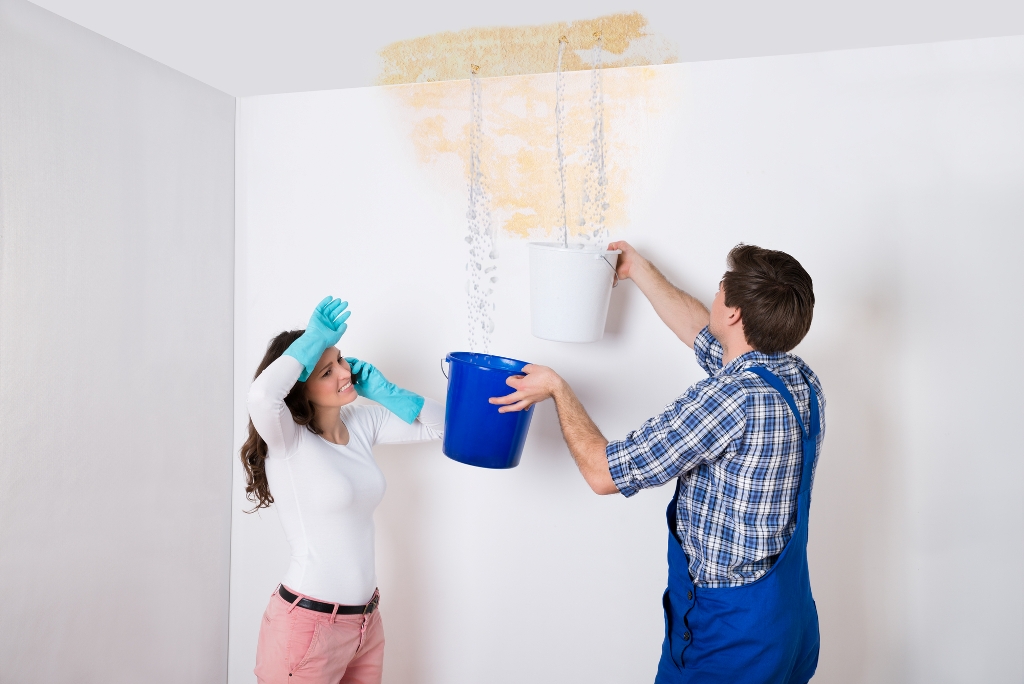Americans spend an average of $650 on roof repair appointments. Most repairs made on rooftops are leaks that need to be patched up to prevent water damage.
Damage can happen from a variety of things and most of them are out of your control. So what do you do in those situations? Continue reading to discover what to do when you have a leaking ceiling in your home.
1. Start With a Bucket
The very first thing that you should do when you notice a leaking ceiling is to place a bucket under it. Placing a bucket underneath can help collect the water that’s dripping and prevent even more water damage. Many people recommend using a piece of wood in the bucket to minimize the dripping noise if it bothers you.
If you can’t find a bucket, grab anything else that can hold water to keep the floor free of damage.
A roof leak that hasn’t broken through yet can look like a dark spot on the ceiling. Sometimes paint will also bubble up in the area. If you notice this, get your bucket ready, because you’ll need it in step 3.
2. Check the Surroundings
After you have a container catching the water, you should check your surroundings and get rid of any electronics.
If you have any cords or devices plugged in near the leaking ceiling you should immediately unplug them if it is safe to do so. Leaving items plugged into the wall can create a risk of starting an electrical fire.
During this step, you should also move any valuables or items that you don’t want to get damaged. If your belongings got wet in the process, be sure to fully clean and dry them out to prevent mold from growing.
3. Drain the Water
Once you have everything out of the way and a bucket underneath the water damaged spot, you can drain the water.
You only need to drain the water if it has not punctured through the ceiling yet. If you notice that the leak is spreading and collecting in one main area, you can poke a small hole with a shart object and the water will start to pour out. Allowing the water to escape will help relieve pressure on the ceiling and prevent further damage.
4. Locate the Source of the Problem
A leaking ceiling or roof can cause anxiety if you don’t know the source of the problem. After you have collected the pooled-up water and cleaned the area, you should try locating the source of the leak, if possible. If you can go into your ceiling you can look for holes in the wall and water damaged spots. This will help you locate the original damaged area.
Make sure that you pay attention to where the leak is coming from in the house to determine where it is in the attic. If the leak is coming from the rooftop and you are unable to access it, consider hiring a professional.
Many times when there is a leak, it is due to weather. More than 50% of house insurance claims are due to weather, such as wind, hail, and snow.
5. Patch the Spot
Finding the source of the water leak can take time, but once you find it you can determine the extent of damage and temporarily fix the spot. A lot of people end up covering leaks in the roof and ceiling with a tarp. However, this is not always the best solution. If you want to prevent water damage from spreading, you should use roofing caulk or tape.
Caulk and tape work best for preventing leaks because they can fully seal an area and they are affordable. Using a tarp over the areas that you patched can also act as a second layer of defense for preventing more water from getting in.
It is never a bad idea to purchase extra roofing tape or caulk when you go to the store. Having extra products at home can make the leaking roof repair process much easier the next time you notice a leak.
6. Get Help
Fixing a leak in the roof or ceiling may seem like a task you can handle, but sometimes you may need professional help.
Following the steps above can help prevent damage from spreading and becoming more costly in the time before a professional can come and make the repair. Contacting a local roofer in your area is recommended.
Roofers will likely come by your home to assess the damage and talk to you about a final solution. Many times, roofers will check other weak spots while up there to take preventative measures and ensure that your roof is holding up well.
Don’t be afraid to talk to the roofer about the damage and what you can do to prevent it from happening again. Take advantage of the knowledge these professionals offer.
Kiss That Leaking Ceiling Goodbye
A leaking ceiling is every homeowner’s nightmare.
Ceilings and rooftops can get damaged from severe weather and unfortunate events. Paying attention to wet spots on the ceiling can help you discover where the damage is coming from and how to fix it.
You should always keep a bucket nearby to collect water that builds up in the ceiling. Sometimes you may need to release it with a sharp object to prevent the ceiling from collapsing.
You can patch up a leak for a cheap price, however, you will want to consult a professional for a final solution.
Be sure to check out our blog for more articles with home improvement tips and do it yourself projects!





















